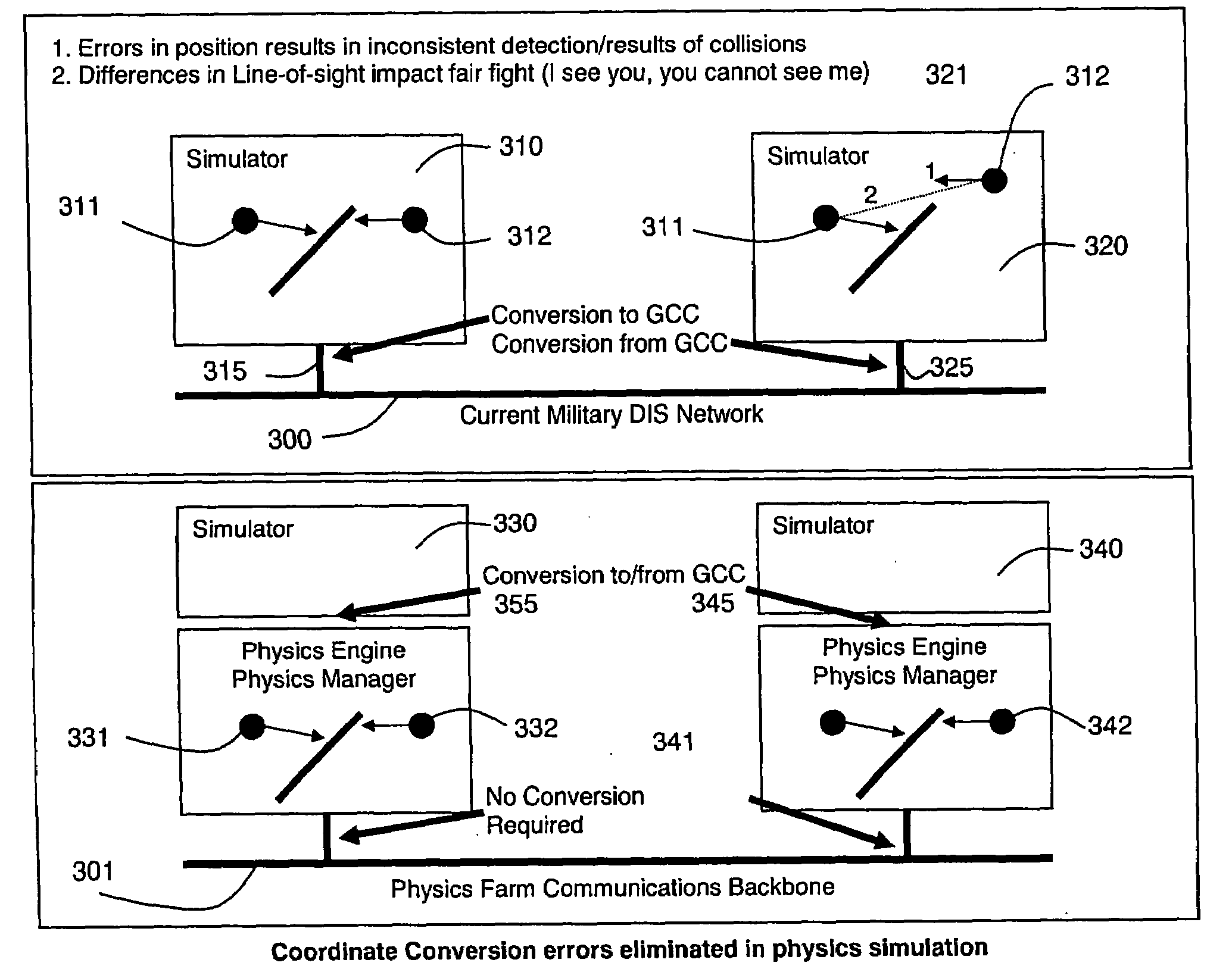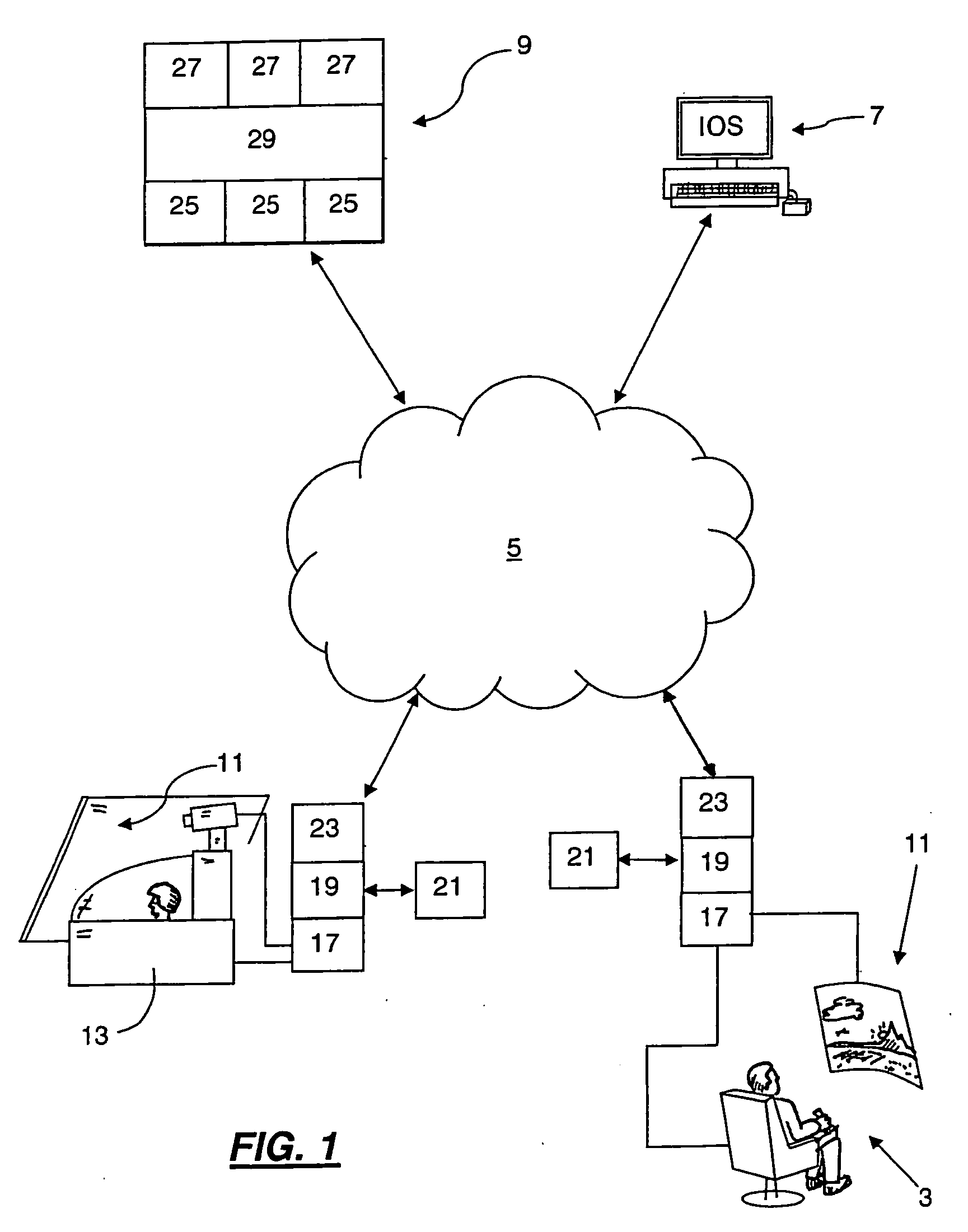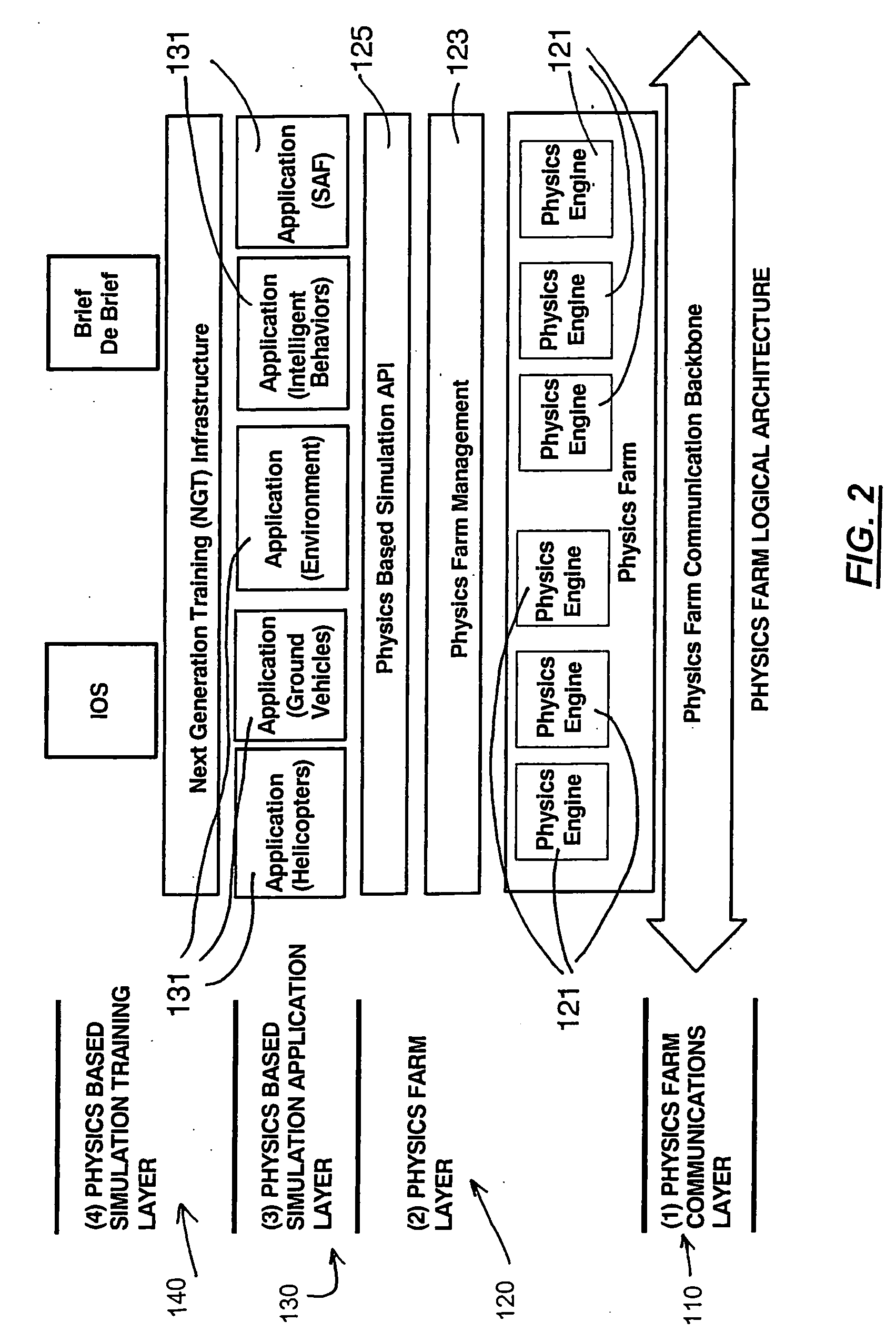Distributed Physics Based Training System and Methods
a distributed physics and training system technology, applied in the field of simulators, can solve the problems of communication delay, human-in-loop (hil) entities tending to complicate matters even more, and ensuring that each simulator receives and responds to all pdus from all other simulators, so as to reduce the training value of the simulation and reduce the realism
- Summary
- Abstract
- Description
- Claims
- Application Information
AI Technical Summary
Benefits of technology
Problems solved by technology
Method used
Image
Examples
example
[0179]FIG. 22 is a simplified block diagram of a demonstrator used to prove the feasibility of applying physics-based modeling for applications that currently rely only on kinematics modeling. Additionally, physics-based modeling was used to incorporate dynamic “cultural features,” which, if provided for at all, have typically been modeled statically.
[0180]The demonstrator provided higher fidelity models, increased quantities of vehicles and new dynamic cultural features. In addition to the inclusion of vehicle models, dynamic cultural features were incorporated into the simulation by loading cultural feature models into the physics engine. This allowed for interactions between the cultural features and vehicles in the simulation. For example, using the physics-based approach, a vehicle was now able to push a barrel out of the way, with both the barrel and the vehicle responding in a realistic manner to the forces generated by the interaction.
[0181]The key components in the example ...
PUM
 Login to View More
Login to View More Abstract
Description
Claims
Application Information
 Login to View More
Login to View More - R&D
- Intellectual Property
- Life Sciences
- Materials
- Tech Scout
- Unparalleled Data Quality
- Higher Quality Content
- 60% Fewer Hallucinations
Browse by: Latest US Patents, China's latest patents, Technical Efficacy Thesaurus, Application Domain, Technology Topic, Popular Technical Reports.
© 2025 PatSnap. All rights reserved.Legal|Privacy policy|Modern Slavery Act Transparency Statement|Sitemap|About US| Contact US: help@patsnap.com



